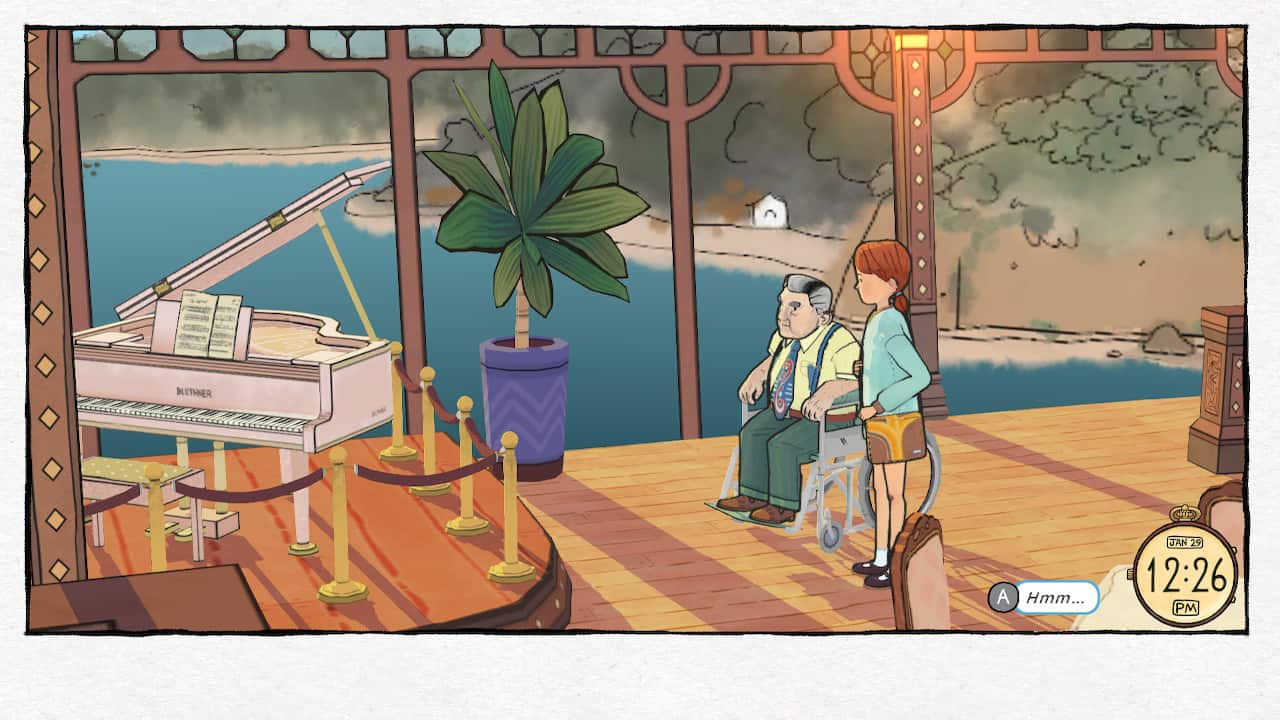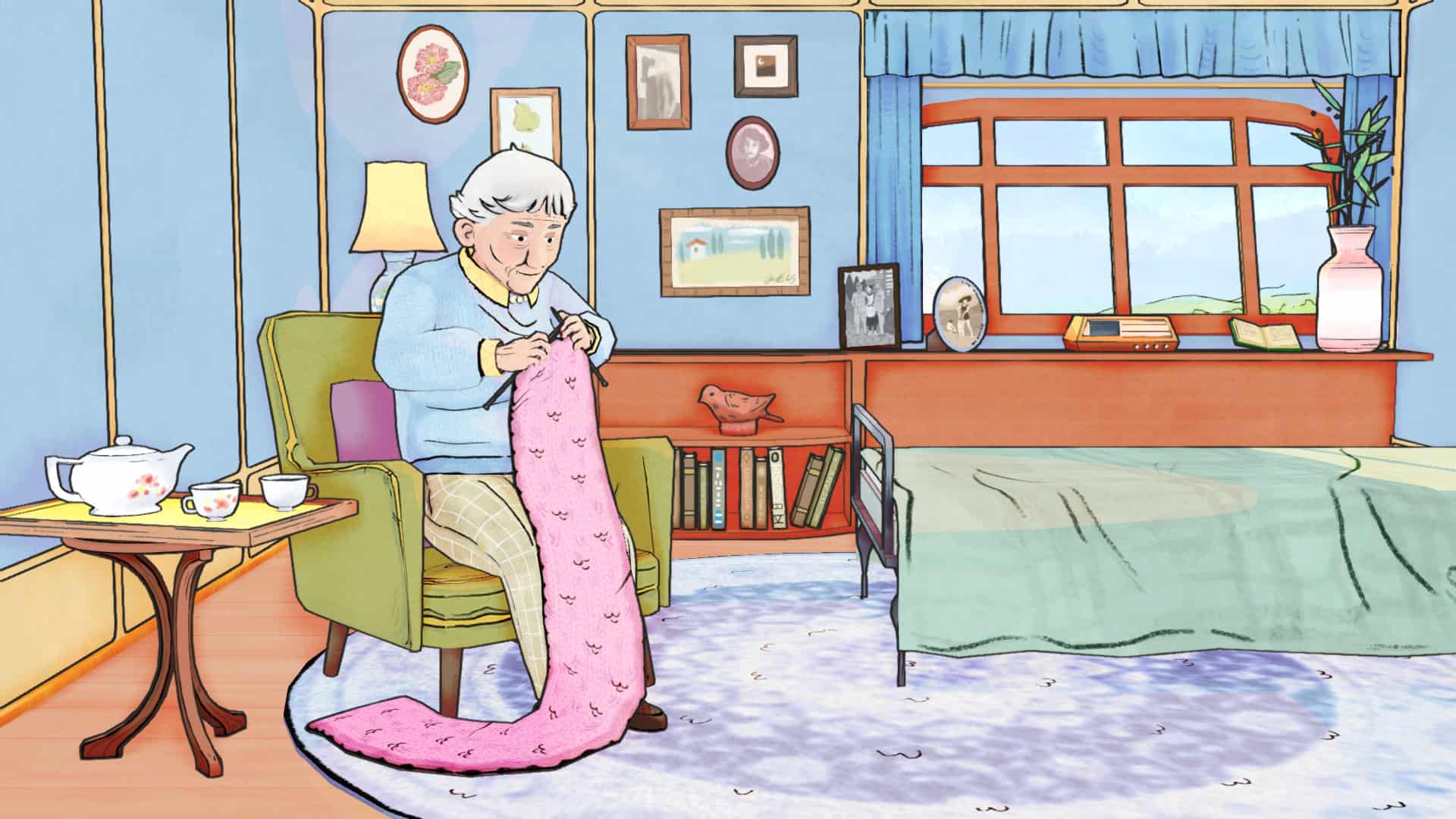It’s the first week of the school holidays. Your friends are free, your new bike is ready to be broken in, and the only homework you’ve got is writing an article for the school newspaper which you’re actually really excited about. The weather is gorgeous in your small seaside town, and the next two weeks are going to be amazing… as soon as you’ve finished working for three days with your mum and a bunch of old folks in a floating hospital, that is.
Originally slated for a 2020 release, Melbourne-made narrative adventure Wayward Strand is finally releasing on PC and consoles. The debut title for local developers Ghost Pattern, this game weaves together dozens of interlinking storylines over the course of a three-day adventure set in an airborne hospital in 1978. We’ve been anticipating this release since we previewed it back in 2019, enthralled with its ambitious premise. Playing through the entire story, I was moved, surprised, and captivated.
Wayward Strand takes place in a hospital for elderly patients. Uniquely, the hospital is housed within the wreck of an abandoned airship that blew in to the town during a massive storm some years ago. You play as Casey Beaumaris, a passionate student journalist and daughter of the hospital’s head nurse. Casey’s mum is extremely busy, and has roped Casey into volunteering to spend time with the patients while the staff prepare for an important visit from a potential funder.
Casey, ever the resourceful student, decides to use this time to write an article about the hospital for her school newspaper. Thus begins three days of exploring the airship, interviewing the patients, and investigating the many mysteries and dramas that unfold.

On your first day, you’ll be tasked with meeting the patients and spending time getting to know them. The kind Nurse Lily gives you a fob watch to keep track of time, which is always displayed onscreen as a constant reminder that you’re choosing how you spend your day. The hospital is divided into several rooms across multiple floors, and navigation is slow. Whether you take the stairs or the rickety old lift between floors, you’re encouraged to match the pace of the hospital’s patients. The nature of the environment also means that you’ll often overhear snippets of conversation or see characters walking past whilst you’re on the way to a patient’s room, enticing you to chase the drama and making the hospital feel alive.
A through-line of the plot is Casey’s tense relationship with her mother. Mrs Beaumaris makes it very clear that she disapproves of Casey’s journalistic ambitions, and their arguments frame each day in the hospital. You can choose to speak with the patients and staff about this tension, or about anything else Casey may have noticed via selecting dialogue options. Each patient has their own history, inner world, and feelings on the others. You can ask about objects in their rooms, discuss any gossip you’ve overheard, or simply choose to hang out with them as time ticks by. With most of the narrative discovery involving exploring and investigating their relationships, you’ll spend a lot of time piecing together nuggets of interpersonal drama and backstories.

To this end, Casey’s journal plays a pivotal role. You’ll often hear the scratching of a pen while a character is speaking, indicating that new information has been recorded on their journal page. These pages fill up with tonnes of text and drawings over the three days, and provide a quick reference source for things Casey has noticed or pieces of insight she’s gleaned. With so many overlapping narrative arcs you really need the journal to keep track – I found myself checking character notes very often in my playthrough.
The influence of immersive or “promenade” theatre on Wayward Strand’s design is evident, and informs so much of its gameplay. In an immersive play, you can wander around the environment and view scenes at your leisure, even following individual actors the entire time. In Wayward Strand, each in-game day takes around 90 minutes of real-world time, but even though multiple events can occur simultaneously, you never really get the sense that you’re missing out. There were moments where what I best felt like doing was listening to music with Mr Pruess by the window, which always felt like time well spent. You know that the world is moving on no matter where you are. Snippets of overheard dialogue tempt you as characters wander past, but you are always free to follow one person or go off on your own.
The difference between Wayward Strand and something like Sleep No More is that everything the player experiences is through Casey’s perspective. Rather than a passive anonymous audience member, you’re always considering events in reference to how they will affect your intrepid protagonist. A particularly memorable moment for me was watching Casey and airship shuttle operator Ted sit together chatting while a medical Code Blue was called over the loudspeaker. It was agony – I knew that somewhere, someone was in trouble, but I also didn’t want to remove Casey from this sweet interaction. These moments of tension are few, but significant.
The characters in Wayward Strand are delightfully multi-dimensional and feel incredibly real. From sweet grandmotherly Ida to amateur occultist Esther, you’ll be getting to know both the patients and hospital staff intimately. Through Casey’s exploration, we come to understand their complex situations – for example, Dr Bouchard, who at first seems grumpy and mean, is later revealed to be going through an extremely tough experience. There are numerous revelations over the three days which re-contextualise earlier interactions in clever and often heart-breaking ways. The weight of these is grounded in firm reality by some incredible voice acting performances. Every line is voiced, and each performance is honest and true to the character. In particular, Michela Ledwidge as Esther captures the character’s erratic personality, with a couple of absolutely gut-wrenching lines cutting through.

The storybook art style is striking, lending a childlike wonder and nostalgia to the hospital and its characters. There are quite a few animation bugs still to be patched, which can lead to some interactions not quite reaching their dramatic potential: it was a bit hard to concentrate during a significant lunch with Ms Hummel when she clipped through the table and her soup tray disappeared. There are also a few moments when the ambition of the narrative is limited from a technical perspective. A few times, I would enter a room right as a conversation was ending and miss the entire dialogue, but still obtain a journal entry detailing what had been said. It’s also worth noting that you can’t save the game during a day – though I think it’s best to play through the story in a single sitting, so this may impact players to varying degrees.

I’m also in two minds about the nature and implementation of self-driven storytelling. Aside from following different characters, I was satisfied enough not to need to play through the story multiple times. However, I’m not sure I’ve made my peace with all of the threads left unfulfilled during my playthrough. Usually, after an immersive theatre performance, you can chat with fellow audience members and share things others may have missed, or special moments you experienced. In a digital medium where it’s likely streamers will play through all of the possibilities within weeks of release, I’m not sure what this conversation will look like. It’s definitely an interesting discussion I’m looking forward to engaging in with other players after Wayward Strand releases.
It’s something special to see stories coming from local artists. I was particularly delighted by the collaboration with Bunurong Land Council on Ted’s character development. It’s the first time I’ve seen the colours of the Aboriginal flag explained by a character in a video game, and his friendship with Casey was a real highlight of my playthrough. There are also surprises and intricacies in many of the characters’ stories that clearly come from the histories and experiences of the development team, and bring a warmth and honesty to what could have otherwise been quite a sad game.
It’s this personal touch that makes Wayward Strand something special. Despite a few technical hiccups and teething issues, there’s a real gentleness and elegance in the way these overlapping stories interact and continue with or without your input. It’s an incredibly ambitious first title from Ghost Pattern, and shows an understanding of self-driven storytelling beyond traditional narrative adventures. I’m looking forward to discussing other players’ experiences of this floating hospital when Wayward Strand releases on 15th September, 2022.











